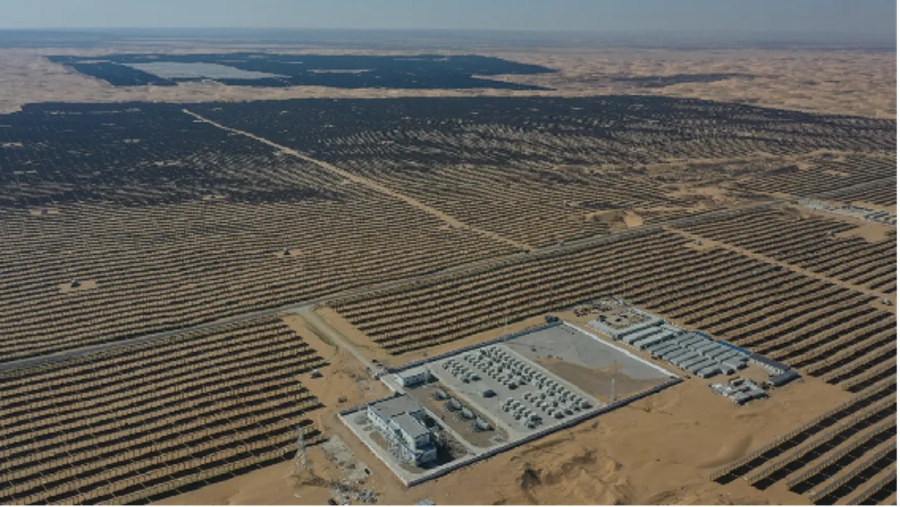BESS in Italy: Huge growth market faces CE mark deadline

Italy’s regulations around battery certification, for both smaller-sized battery storage and large-scale BESS, are seeing significant changes. A mandatory requirement for the CE mark for product conformity comes into effect on August 18, 2024, both in Italy and in Europe. In an interview, pv magazine Italy discussed the growth of battery storage with Roberto Romita, Industrial Key Account Manager, at Sparq, which manufactures battery storage systems, under a corporation headquatered in Sweden.
The need to achieve CE marking in Italy bringing a significant change in terms of safety, quality, and transport, towards greater transparency and available information.
“The new regulation, including all types of batteries, has and will have an impact on the energy storage sector, which continues to record positive trends in 2024. However, while we will see manufacturers’ efforts to comply with the new regulatory requirements, there are bureaucratic aspects concerning BESS and storage systems, says Romite.
“Unfortunately, in our country, bureaucratic procedures have always represented an obstacle that is often not easy to overcome, and often the ‘paperwork,’ rather than ensuring full compliance with rules, produces an effective braking effect on the development of new technologies.”
Romita adds that, along with bureaucracy, other factors such as economics and the structure of existing electrical grids come into play. “In this melting pot of rules, paperwork, and variables, what is the sentiment of companies and individuals towards storage systems?”
“There’s no doubt that in our country, renewable energy generation plants, particularly those using photovoltaics, are growing rapidly. However, as we’ve seen, there are many obstacles to overcome, both in terms of pure costs and bureaucratic aspects.”
Romita also had a detailed answer for a key question regarding the near-term future for BESS, published in full below.
pv magazine Itay: At this point, what could we predict for the immediate future?
Romita: “We must first consider three important points:
1 – Traditional networks and regulations
“In urban centers, it’s near impossible for a home or building to do without any connection to the grid. But the situation changes in alpine communities where there’s a proliferation of self-production plants. This is a point that can make a difference, as aligning regulations in a “lighter” way would certainly have a positive impact.
2 – Incentives and local initiatives
“As mentioned, incentives for installing generation plants are set to decrease from 50% to 36% from January 1, 2025. Nevertheless, in some areas of the peninsula, the ultra-positive growth trend of installations will continue. For example, in Trentino Alto Adige, in just three years, photovoltaics (and also BESS) have recorded a 360% increase, and the trend is not expected to stop. The reason for this phenomenon can be found in the initiatives and the fact that local institutions have understood the absolute importance of resources such as renewable sources, BESS, and self-generation.
3 – Bureaucratic procedures and reference figures
“The installation of an energy generation and storage system has many aspects for which we can say it’s “easier done than said,” which is the exact opposite of what one might think! This is thanks to the growth of packages with flexibility and modularity that can adapt well to almost all requirements. But, there’s a need to streamline the bureaucratic process and the “supply chain” composed of intermediary figures, factors that often tend to discourage all those who are inclined to enter the world of self-consumption.”
Carbon footprints requirements
Romita adds that starting from August next year, for all batteries with a capacity exceeding 2 kWh, or 5 kg in weight, including industrial packs for BESS or automotive use, each manufacturer will have to provide not only a battery passport but also the related carbon footprint certification.
“It should be considered that for this last requirement, the correct calculation of carbon footprint values to produce the pack is not easy to make. It must take into account not only the quantity of emissions generated during production but also those related to the forming various components, the transport of the semi-finished or finished product, if imported, or the transport of raw materials in case of localized production.”
Commissioning hurdles
The common denominator of the residential and industrial scenario in terms of BESS is bureaucracy, the long process necessary to complete the commissioning of a BESS. The maze of rules for all those who decide to install an energy storage system is dense and intricate.
“The 50% bonus for residential installation of a PV system, will remain in force until the end of 2024, and immediately decrease to 36% from January 1 of next year,” says Romita, pointing out it’s too late for new projects to start and receive a full bonus at the residential end.
“Even before starting to size the system, it’s necessary to retrieve a lot of information and fill out many forms accurately. It’s almost always necessary to consult a specialized consultant that can achieve this. For industrial sizing, things get even more complicated because it must be considered that above 150 kW, it’s necessary to obtain the approval of energy entities. Therefore, an energy consultant who acts as an intermediary between the company and the entities is absolutely necessary. On average, the time to complete the entire process takes from six to twelve months.”
The final considerations emphasize that, despite the need to overcome several obstacles for the installation of an energy storage system, the market for BESS using renewables in Italy is more active than ever.
“According to the latest report from SolarPower Europe, Italy has gained second place right behind Germany in terms of energy storage market share. 2023 recorded the best result ever with almost 4 GWh, equal to 22% of the market share, of installed photovoltaic BESS, which corresponds to just under 90% more than in 2022. In the wake of this very positive trend, we can therefore expect confirmation of the growth estimates for energy storage in the coming years, which speak of an increase of over seven times by 2030.”
From pv magazine Italy













